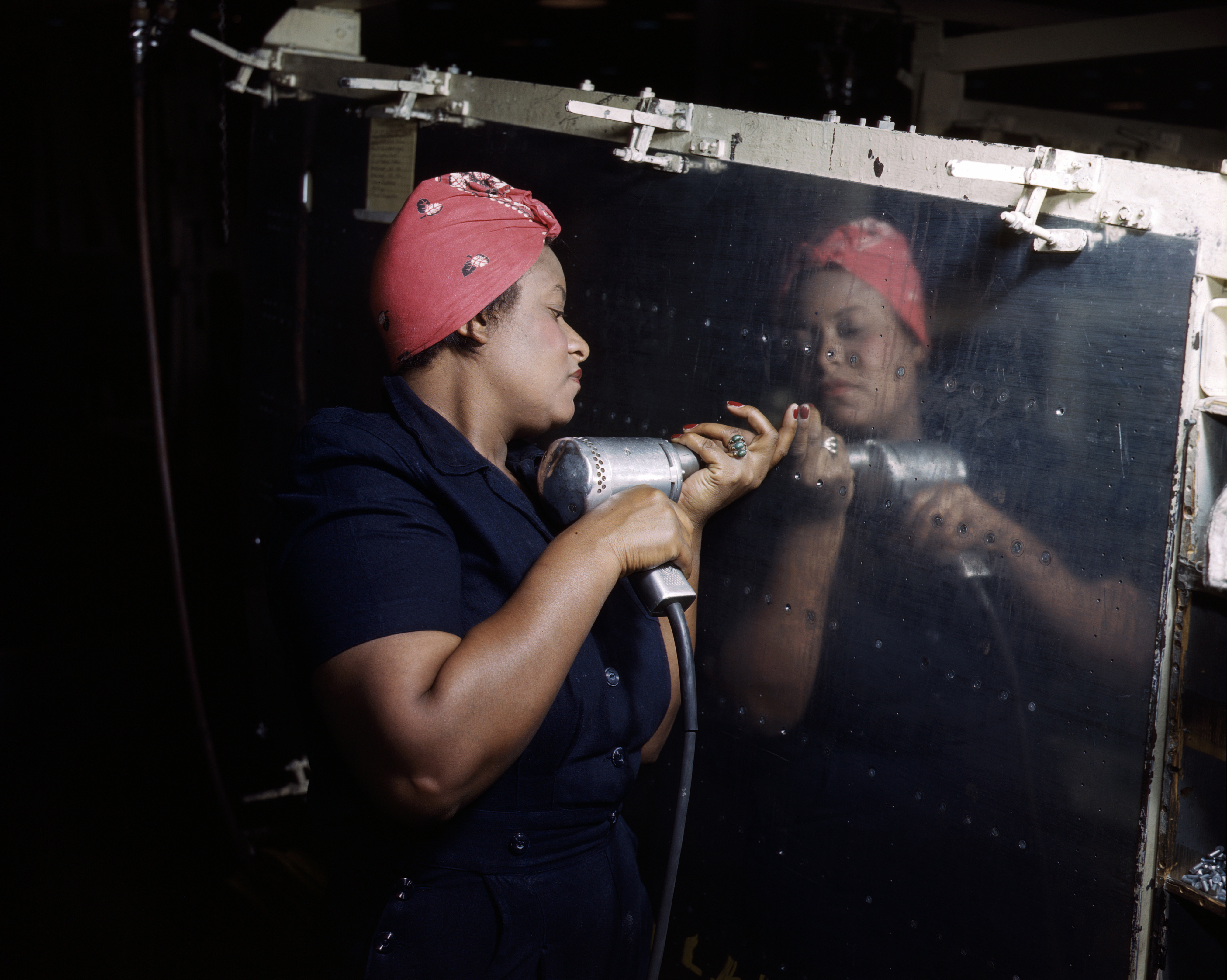Mobilizing for the War
The draft mobilized significant numbers of adult men into military service, which created a demand for industrial workers to support the war effort. There were efforts by the United States government to recruit women into the workforce, especially in war industries (2). More than 10 million women were employed in 1941, but this number surged to more than 18 million by 1944 (3). It is a common misconception to assume all of these increases were with women who had no experience, but many had worked previously. Almost 1/3 of women hired had more than a decade of past work participation (3). There was an overall increase during the war, with a 6% rise in women’s share of the active labor force from 1940-1945 (1).
This provided an opportunity to enter into sectors that wouldn’t have been available without the war, but this also negatively affected education. Almost 41% of women not attending school in 1944 were concentrated in the manufacturing sector, a primarily wartime contribution (1).
Employment had negative effects on education generally, bt especially for women. This is demonstrated by the WWII period marked with sharply declining high school graduation rates accompanied by a huge surges of women entering the workforce (Jaworski 2014, pg. 175).
The end of the war halted this progress, evidenced in the precipitous decline of female labor force participation. Some research suggests that “less than half those that entered during the war remained in 1950” (1). This was met with much resistance from those who wanted to maintain the status quo, as evidenced in this video produced by the U.S. government at the time.
References:
(1) Jaworski, Taylor. “’You’re in the Army Now:’ The Impact of World War II on Women’s Education, Work, and Family.” The Journal of Economic History Vol. 74, No. 1 (March 2014): 169-95. Accessed March 25, 2015. DOI: 10.1017/S0022050714000060.
(2) Gordy, Laurie L., Jennifer Hogan, and Alice Pritchard. “Assessing ‘Herstory’ of WWII: Content Analysis of High School History Textbooks.” Equity & Excellence in Education vol. 37 , No. 1 (2004): 80-91. Accessed April 15, 2015. DOI: 10.1080/10665680490422133.
(3) Miller, Marc. “Working Women and World War II.” New England Quarterly(1980): 42-61.

